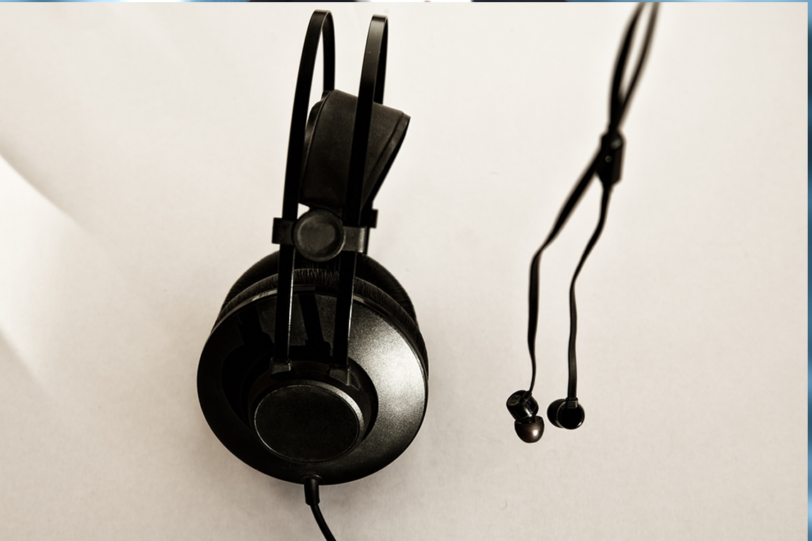Setting up a fishing pole correctly is crucial for a successful angling experience. It ensures that your equipment functions smoothly and increases your chances of catching fish. In this guide, we will walk you through the essential steps to assemble your rod and reel, thread your line, choose the right lure, and attach it securely. Whether you’re a novice or seasoned angler, mastering these basics will enhance your fishing skills and make your time on the water more enjoyable.
Equipment Preparation
Before you embark on your fishing adventure, it’s essential to gather all the necessary equipment and ensure everything is in optimal condition. Here’s a detailed look at how to prepare your equipment for setting up your fishing pole:
Gathering Necessary Equipment:
- Fishing Rod and Reel: Choose a fishing rod and reel appropriate for the type of fishing you plan to do. Consider factors such as the species of fish you’re targeting and the fishing environment (freshwater or saltwater).
- Fishing Line: Select a fishing line with the appropriate strength and type for your fishing needs. Monofilament, fluorocarbon, and braided lines are common options, each with its advantages.
- Lures and Baits: Depending on the fish species and fishing conditions, gather a selection of lures and baits. Consider factors such as the size, color, and action of the lures to match the fish’s preferences.
- Terminal Tackle: Don’t forget essential terminal tackle items such as hooks, swivels, sinkers, and floats. Make sure you have a variety of sizes and types to accommodate different fishing situations.
Inspecting Equipment:
- Rod and Reel: Carefully inspect the rod and reel for any signs of damage or wear. Check for cracks, loose or broken components, and smooth reel operation. Address any issues before proceeding with setup.
- Fishing Line: Examine the fishing line for any abrasions, nicks, or weak spots. Replace the line if necessary to prevent breakage during fishing.
- Lures and Baits: Inspect lures and baits for damage, rust, or dull hooks. Replace any worn-out or damaged lures to ensure effective fishing.
- Terminal Tackle: Check terminal tackle items for rust, corrosion, or damage. Replace any worn-out or damaged components to prevent equipment failure while fishing.
By thoroughly preparing your equipment and ensuring everything is in top condition, you set yourself up for a successful and enjoyable fishing experience. Taking the time to gather and inspect your gear beforehand can prevent issues and frustrations while on the water, allowing you to focus on the thrill of the catch.
Assembling the Fishing Rod and Reel
Assembling your fishing rod and reel correctly is essential for optimal performance while angling. Here’s a step-by-step guide to help you assemble your fishing rod and reel:
Step 1: Identify Rod and Reel Components:
- Familiarize yourself with the various components of your fishing rod and reel, including the rod sections, reel seat, reel foot, reel handle, and drag system.
Step 2: Connect Rod Sections:
- If your fishing rod comes in multiple sections, carefully align and connect the sections together. Ensure that the alignment marks or guides match up correctly to maintain the rod’s integrity.
Step 3: Attach Reel to Rod:
- Place the reel foot into the reel seat located on the rod handle. Secure the reel by tightening the reel seat locking mechanism or screws, ensuring a snug fit without over-tightening.
Step 4: Spool Line onto Reel:
- Thread the fishing line through the rod guides starting from the tip down to the reel. Open the bail or line roller on the reel to access the spool. Secure the line to the spool using an appropriate knot or by following the reel manufacturer’s instructions.
Step 5: Close the Bail or Line Roller:
- Once the line is securely attached to the spool, close the bail or line roller to prevent the line from tangling during casting and retrieval.
Step 6: Adjust Drag System:
- Check the drag system on your reel and adjust it according to the fishing conditions and target species. The drag setting determines the amount of resistance applied to the line when a fish pulls on it, preventing line breakage.
Step 7: Test Reel Operation:
- Before heading out to fish, test the reel’s operation by turning the handle and engaging the drag system. Ensure that the reel functions smoothly without any grinding or sticking.
Step 8: Fine-Tune Rod and Reel Setup:
- Make any necessary adjustments to the rod and reel setup based on personal preference and fishing conditions. This may include adjusting the reel handle position, reel spool tension, or rod guides for optimal casting performance.
By following these steps to assemble your fishing rod and reel correctly, you’ll be ready to tackle any fishing situation with confidence. Proper assembly ensures that your equipment functions smoothly, allowing you to focus on the thrill of the catch without worrying about technical issues.
Threading the Fishing Line
Threading the fishing line onto your rod is a crucial step in setting up your fishing pole. Properly threading the line ensures smooth casting and retrieval, reducing the risk of tangles or knots. Here’s a detailed guide on how to thread your fishing line effectively:
Step 1: Select the Fishing Line:
- Choose the appropriate fishing line for your fishing needs, considering factors such as line strength, visibility, and water conditions. Common options include monofilament, fluorocarbon, and braided lines.
Step 2: Thread the Line through the Rod Guides:
- Start by threading the end of the fishing line through the first rod guide closest to the reel. Continue threading the line through each subsequent guide, following the natural curvature of the rod until you reach the tip.
Step 3: Tie the Line to the Reel Spool:
- Once you’ve threaded the line through all the rod guides, secure the end of the line to the reel spool. Use an appropriate knot, such as an arbor knot or improved clinch knot, to ensure a strong and secure connection.
Step 4: Spool the Line onto the Reel:
- With the line secured to the reel spool, begin spooling the line onto the reel. Keep tension on the line with your fingers to prevent loose wraps or overlapping, ensuring an even distribution of line on the spool.
Step 5: Close the Bail or Line Roller:
- After spooling the line onto the reel, close the bail (for spinning reels) or line roller (for baitcasting reels) to secure the line in place. Ensure that the line lays smoothly on the spool without any twists or tangles.
Step 6: Check for Twists or Tangles:
- Before casting, carefully inspect the line for any twists, loops, or tangles. Correct any issues by re-threading the line through the rod guides and adjusting the line tension on the reel spool as needed.
Step 7: Test Casting and Retrieval:
- Practice casting and retrieving the line to ensure that it feeds smoothly through the rod guides and the reel operates without any issues. Make any necessary adjustments to the line tension or reel drag to optimize performance.
Threading the fishing line may seem like a simple task, but it plays a significant role in the overall performance of your fishing setup. By following these steps and paying attention to detail, you can ensure that your fishing line is properly threaded, allowing you to cast with confidence and increase your chances of a successful catch.
Selecting the Right Lure
Choosing the right lure is essential for attracting fish and enticing them to bite. The success of your fishing expedition often depends on selecting a lure that matches the preferences of the target species and the fishing conditions. Here’s a detailed guide to help you select the right lure for your fishing pole setup:
Step 1: Identify Target Species:
- Determine the species of fish you intend to catch. Different fish species have varying feeding habits, preferences, and behaviors, which influence the choice of lure.
Step 2: Consider Fishing Conditions:
- Assess the prevailing fishing conditions, including water clarity, depth, temperature, and weather. These factors impact the effectiveness of certain lure types and colors.
Step 3: Understand Lure Types:
- Familiarize yourself with the various types of lures available, such as crankbaits, spinnerbaits, jigs, spoons, soft plastics, and top water lures. Each type of lure has unique characteristics and is designed to mimic different types of prey.
Step 4: Match the Hatch:
- Choose a lure that closely resembles the natural prey items found in the fish’s environment. Matching the size, shape, color, and movement of the prey increases the likelihood of attracting strikes from hungry fish.
Step 5: Experiment with Colors:
- Test different lure colors to determine which ones are most effective under the current fishing conditions. Bright and flashy colors may be more visible in murky water or low light conditions, while natural or subdued colors may work better in clear water.
Step 6: Consider Lure Action:
- Pay attention to the action and movement of the lure in the water. Some lures have a diving or swimming action, while others produce vibrations or erratic movements to trigger strikes from curious or aggressive fish.
Step 7: Adapt to Fish Behavior:
- Adjust your lure selection based on the behavior and feeding patterns of the fish. If the fish are actively feeding near the surface, consider using topwater lures. If they are holding deep or suspended in the water column, opt for sinking or diving lures.
Step 8: Be Prepared to Switch Lures:
- Don’t hesitate to switch lures if you’re not getting any bites. Fish can be selective, and changing the lure type, size, or color may be necessary to entice them to strike.
By carefully selecting the right lure for your fishing pole setup, you can increase your chances of success and enjoy a rewarding fishing experience. Experimenting with different lure types, colors, and techniques allows you to adapt to changing conditions and maximize your chances of hooking into a trophy fish.
Attaching the Lure
Attaching the lure securely to your fishing line is crucial to prevent it from coming loose during casting or retrieval and to ensure proper presentation to the fish. Here’s a detailed guide on how to attach a lure effectively:
Step 1: Select the Proper Knot:
- Choose an appropriate knot for attaching the lure to your fishing line. Common knots for lure attachment include the improved clinch knot, Palomar knot, and loop knot. Select a knot that suits the type and size of your fishing line and the design of the lure.
Step 2: Thread the Line Through the Lure:
- Pass the end of the fishing line through the eyelet or attachment point on the lure. Ensure that the line passes through the lure smoothly without any twists or tangles.
Step 3: Tie the Knot:
- Tie the selected knot securely around the attachment point on the lure. Follow the specific tying instructions for the chosen knot, making sure to cinch the knot tightly to the lure.
Step 4: Trim Excess Line:
- Once the knot is securely tied, trim any excess line extending beyond the knot using sharp scissors or line clippers. Leave a small tag end of the line to prevent the knot from slipping.
Step 5: Test the Knot:
- After tying the knot, give it a firm tug to test its strength and ensure that it holds securely. Check for any signs of slippage or weakness in the knot, and retie if necessary to ensure a reliable connection.
Step 6: Consider Using a Leader:
- Depending on the fishing conditions and target species, consider using a leader between the main fishing line and the lure. A leader can provide abrasion resistance and camouflage, especially in clear water or around structure.
Step 7: Check for Proper Alignment:
- Before casting, check that the lure is properly aligned with the fishing line to ensure smooth presentation and action in the water. Adjust the position of the lure if necessary to achieve optimal performance.
Step 8: Inspect Regularly:
- Throughout your fishing trip, periodically inspect the lure attachment to ensure that it remains secure and intact. Re-tie the knot if you notice any signs of wear, damage, or weakening.
By following these steps to attach your lure securely to your fishing line, you can fish with confidence knowing that your presentation is optimal and your chances of hooking into a fish are maximized. Proper lure attachment is essential for successful fishing and prevents frustrating losses due to equipment failure.
Testing and Adjustments
After setting up your fishing pole and attaching the lure, it’s essential to test the setup and make any necessary adjustments to ensure optimal performance. Here’s a detailed guide on how to test and fine-tune your fishing pole setup:
Step 1: Perform Casting Tests:
- Practice casting your line in an open area to test the casting distance, accuracy, and smoothness of the cast. Pay attention to any signs of line tangling, backlash, or casting errors.
Step 2: Assess Casting Distance:
- Evaluate the casting distance achieved with your setup and adjust your casting technique or equipment settings accordingly. Consider factors such as rod action, reel spool tension, and casting angle to maximize casting distance.
Step 3: Check Line Retrieval:
- Test the line retrieval by reeling in the line at different speeds and observing the reel’s operation. Ensure that the reel handle turns smoothly and that the line is retrieved evenly onto the spool without any snags or twists.
Step 4: Evaluate Lure Action:
- Observe the action and movement of the lure in the water to ensure that it performs as expected. Make adjustments to the retrieval speed, rod movements, or lure presentation to achieve the desired action and attract fish effectively.
Step 5: Monitor Line Sensitivity:
- Pay attention to the sensitivity of the fishing line and rod tip to detect subtle strikes or bites from fish. Practice maintaining light tension on the line while remaining alert for any changes in line movement or tension.
Step 6: Fine-Tune Drag Settings:
- Adjust the drag settings on your reel to achieve the desired level of resistance when fighting fish. Test the drag by pulling on the line with varying degrees of force to ensure that it provides sufficient resistance without risking line breakage.
Step 7: Make Necessary Adjustments:
- Based on your observations and test results, make any necessary adjustments to your fishing pole setup, including reel settings, lure selection, casting technique, and retrieval speed. Continuously refine your setup to optimize performance and increase your chances of success.
Step 8: Practice and Experiment:
- Practice casting, retrieving, and fishing with your setup in different conditions and environments to gain experience and refine your skills. Experiment with different techniques, lures, and presentations to adapt to changing fishing conditions and maximize your effectiveness on the water.
By testing and making adjustments to your fishing pole setup, you can ensure that your equipment performs optimally and increase your chances of a successful fishing experience. Regular practice and experimentation will help you develop confidence in your skills and enhance your enjoyment of the sport of fishing.
Safety Precautions
While setting up and using a fishing pole can be enjoyable, it’s important to prioritize safety to prevent accidents and injuries. Here’s a detailed overview of safety precautions to keep in mind:
1. Handle Hooks with Care:
- Exercise caution when handling hooks to avoid accidental injuries. Keep hooks covered with protective caps or securely attached to lures when not in use. Avoid touching the sharp points of hooks, and handle them with pliers or hook removers when necessary.
2. Mindful Casting:
- Be aware of your surroundings and other people nearby when casting your line. Ensure there is enough space to cast safely without risk of hooking objects or people. Practice proper casting techniques to minimize the likelihood of backlash or tangling.
3. Wear Protective Gear:
- Consider wearing protective gear such as sunglasses, a hat, and sunscreen to shield yourself from the sun’s rays and potential hazards. Polarized sunglasses can improve visibility and protect your eyes from glare while fishing.
4. Watch for Slippery Surfaces:
- Be cautious when walking on wet or slippery surfaces, such as docks, rocks, or boat decks. Wear appropriate footwear with non-slip soles to maintain traction and reduce the risk of slipping and falling.
5. Use Fishing Poles Responsibly:
- Handle fishing poles with care to avoid damage to the equipment and potential injuries. Avoid swinging or waving fishing poles recklessly, especially when other people are nearby. Secure fishing poles when not in use to prevent accidental falls or damage.
6. Be Aware of Wildlife:
- Stay vigilant and respectful of wildlife in the area, including fish, birds, and other animals. Avoid disturbing nesting sites or habitats, and be cautious of potential encounters with wildlife, especially in remote or wilderness areas.
7. Practice Proper Fish Handling:
- Handle fish with care and respect to minimize stress and injury to the fish. Use wet hands or a landing net to handle fish gently, and avoid unnecessarily prolonging their time out of the water. Release fish promptly and properly to ensure their survival after catch-and-release.
8. Be Prepared for Emergencies:
- Carry a basic first aid kit and emergency supplies in case of accidents or injuries while fishing. Familiarize yourself with basic first aid procedures and know how to respond to common fishing-related injuries such as hook punctures or cuts.
9. Follow Local Regulations:
- Familiarize yourself with local fishing regulations and guidelines, including size and bag limits, catch-and-release practices, and restricted areas. Adhere to conservation measures and ethical angling practices to protect fish populations and their habitats.
10. Stay Weather-Aware:
- Keep an eye on weather forecasts and be prepared for changing weather conditions while fishing. Avoid fishing in severe weather, such as thunderstorms or high winds, which can pose safety risks and compromise your well-being.
By prioritizing safety and following these precautions while setting up and using your fishing pole, you can enjoy a safe and enjoyable fishing experience while minimizing the risk of accidents or injuries. Remember to stay vigilant, use common sense, and respect the environment and wildlife while pursuing your passion for fishing.
Practice and Patience
Mastering the art of setting up a fishing pole takes practice, patience, and dedication. Here’s a detailed exploration of how practicing and cultivating patience can enhance your fishing experience:
1. Perfecting Techniques:
- Dedicate time to practicing fundamental fishing techniques such as casting, reeling, and lure presentation. Regular practice helps improve your skills and confidence, allowing you to execute maneuvers with precision and finesse.
2. Experimenting with Strategies:
- Explore different fishing strategies, tactics, and approaches to adapt to varying fishing conditions and target species. Experiment with different lure types, retrieves, and fishing locations to expand your knowledge and repertoire.
3. Learning from Experience:
- Embrace every fishing trip as an opportunity to learn and gain valuable experience. Pay attention to patterns, trends, and observations while fishing, and use them to inform your future decisions and strategies.
4. Developing Observation Skills:
- Sharpen your observation skills by closely monitoring water conditions, weather patterns, and fish behavior. Notice subtle cues and indicators in your surroundings that may influence fishing success, such as bird activity or water temperature changes.
5. Practicing Knot Tying:
- Practice tying fishing knots regularly to ensure proficiency and reliability when attaching lines, lures, and rigs. Mastering essential fishing knots increases efficiency on the water and reduces the likelihood of equipment failures.
6. Building Endurance and Stamina:
- Fishing can be physically demanding, requiring strength, endurance, and stamina, especially during long days on the water. Engage in regular physical activity and outdoor exercises to build endurance and stamina for extended fishing trips.
7. Cultivating Patience:
- Understand that fishing requires patience and perseverance, as success may not always come quickly or easily. Practice patience while waiting for bites, experimenting with different techniques, and adapting to changing conditions.
8. Celebrating Progress:
- Acknowledge and celebrate your progress and achievements, no matter how small. Whether it’s mastering a new casting technique or landing a prized catch, take pride in your accomplishments and use them as motivation to continue improving.
9. Learning from Others:
- Seek guidance and advice from experienced anglers, mentors, or fishing communities to accelerate your learning and development. Embrace opportunities to exchange knowledge, share tips, and learn from others’ experiences.
10. Enjoying the Journey:
- Ultimately, remember that fishing is not just about catching fish—it’s about enjoying the journey, the camaraderie, and the beauty of nature. Embrace the serenity of being on the water, the thrill of the chase, and the satisfaction of honing your skills over time.
By dedicating yourself to practice, honing your skills, and cultivating patience, you can enhance your fishing prowess and deepen your appreciation for the sport. Embrace the journey of improvement and discovery, and savor every moment spent pursuing your passion for fishing.
Conclusion
As you wrap up your journey through the process of setting up a fishing pole, it’s essential to reflect on the key points covered and the valuable insights gained. Here’s a comprehensive conclusion to summarize the essential aspects of setting up a fishing pole and inspire you to embark on memorable fishing adventures:
1. Recap of Key Points:
- Throughout this guide, we’ve explored the fundamental steps involved in setting up a fishing pole, from assembling the rod and reel to selecting the right lure and attaching it securely. We’ve emphasized the importance of proper equipment preparation, technique mastery, and safety precautions to ensure a successful and enjoyable fishing experience.
2. Importance of Preparation:
- Proper preparation is the cornerstone of successful fishing. Gathering the necessary equipment, inspecting it for damages, and ensuring everything is in optimal condition lays the foundation for a seamless fishing trip. By taking the time to prepare adequately, you set yourself up for success on the water.
3. Mastery of Techniques:
- Mastery of fishing techniques such as casting, threading the line, and lure presentation is essential for maximizing your chances of catching fish. Regular practice, experimentation, and learning from experience are key to honing your skills and becoming a proficient angler.
4. Embracing Patience and Persistence:
- Fishing requires patience, perseverance, and a willingness to adapt to changing conditions. Embrace the art of patience while waiting for bites, experimenting with different strategies, and learning from setbacks. Remember that success may not come instantly, but with dedication and persistence, you can achieve your fishing goals.
5. Enjoying the Journey:
- Beyond the act of catching fish, fishing is a journey filled with adventure, camaraderie, and appreciation for the beauty of nature. Cherish the moments spent on the water, whether alone or with friends and family, and relish the serenity of the natural environment.
6. Continuing the Learning Process:
- Fishing is a lifelong learning process, and there’s always something new to discover and master. Stay curious, seek knowledge from experienced anglers, and remain open to trying new techniques, equipment, and fishing destinations.
7. Encouragement to Apply Knowledge:
- As you conclude this guide, we encourage you to apply the knowledge and insights gained to your future fishing endeavors. Whether you’re a novice angler just starting or an experienced veteran honing your skills, remember that every fishing trip is an opportunity for growth, learning, and enjoyment.
8. Wishing You Tight Lines:
- On behalf of all anglers and fishing enthusiasts, we wish you tight lines, memorable catches, and countless unforgettable moments on the water. May your fishing adventures be filled with excitement, success, and a deep connection to the natural world.
In closing, setting up a fishing pole is more than just a mechanical process—it’s a gateway to a world of exploration, discovery, and connection with nature. As you embark on your fishing journey, may you find fulfillment, joy, and a profound appreciation for the wonders of the aquatic realm. Happy fishing!
In conclusion, mastering the art of setting up a fishing pole is not just about assembling equipment; it’s about embracing a lifestyle of patience, persistence, and passion for the sport. From meticulously preparing your gear to honing your casting technique and embracing the serenity of the water, every aspect of setting up a fishing pole contributes to the rich tapestry of the angling experience. As you embark on your fishing adventures, remember that success is not solely measured by the size of the catch, but by the memories made, the lessons learned, and the connections forged with nature and fellow anglers. So, with each cast, each tug on the line, and each sunset over the horizon, may you find fulfillment, joy, and a deep sense of appreciation for the beauty and bounty of our aquatic world. Happy fishing, and may your lines always be tight!






